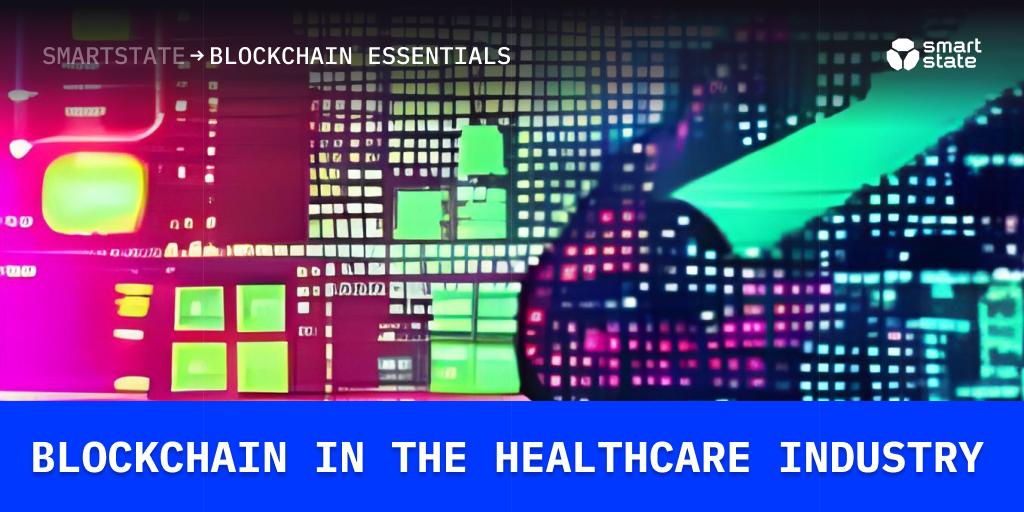Blockchain technologies in the healthcare industry
More and more aspects of life adopt the blockchain technologies, and healthcare seems to be no exception. In such a sensitive industry, data security, transparency and accessibility are among the key targets. Human health and even life rely on correct and early diagnosing and proper treatment. But how the blockchain technology can help here and what issues it helps to solve? Let us take a closer look.
Blockchain in healthcare
Blockchain is designed as a distributed system using cryptography which makes it hard for attackers and criminals to corrupt the data or change it without other network ‘inhabitants’ approval. This makes medical databases, recorded and stored on a blockchain, secure and protected. The peer-to-peer architecture of a blockchain allows to synchronize every patient record file within itself, and keeps them updated even if they are not stored in one and the same place (a personal computer or a server).
Healthcare blockchains are not always completely decentralized, as they are usually built as minor private networks (unlike in cryptocurrency or huge gaming platforms). They include a relatively small number of nodes and often require permission for joining.
Benefits
To sum it up, blockchain brings visible advantages to the healthcare industry in the areas of security, efficiency, transparency, etc. For example, one innovation is the so-called ‘telehealth program’ (when doctors reach and even treat patients remotely by means of using IoT devices with the data processed on a real-time basis). Since the solution is rather vulnerable to hackers, specific smart contracts are run on a private clinic’s blockchain to collect, analyze and store data securely.
Anyway, what are the main points?
- Security and protection against fraud. Blockchain helps to create secure databases, registering and tracking huge amounts of patients’ personal and medical data, and avoid possible corruption of that data. Traditional methods involve centralized data storage, when all the information is kept on one server, which makes the data vulnerable. In contrast to this, distributed systems provide a high security level and help to avoid technical failures and defend from frequent attacks (such as ransomware attacks) on hospital systems. Blockchains also provide solutions against such common issues as medical insurance fraud (such as paying for treatment which did not take place or fees for unnecessary medical services). All the actual records are stored on a blockchain, and insurance companies can get access to necessary data and check it. Smart contracts are used in the health insurance system, which helps to get rid of intermediary staff which is not needed. As soon as a patient buys insurance, the personal and policy details are stored on a blockchain securely, since blockchains are more accessible and more rarely hacked than traditional databases. When the patient undergoes this or that treatment, the particular smart contract is triggered and the payment is transferred to the hospital.
- Interoperability. Blockchain helps to overcome the difficulties related to differences in data storage systems and lack of interoperability among healthcare institutions and service providers. Authorized users can get access to a unified medical database (information about patients, their cases or medicine distribution records). With a blockchain there is no need to get access to a separate storage each time to get this or that file or piece of information.
- Accessibility and treatment. Blockchains make life easier not only for the doctors and service providers, but also for patients. They take accessibility and transparency of personal health data to another level. The accuracy of records can be checked easier and human factor errors or falsifications can be avoided, which is vitally important for patients, and the risk of incorrect treatments also decreases.
- Supply management and clinical trials. Using blockchain helps to deal more efficiently with such important spheres as tracking pharmaceuticals and clinical trials. With its security and accessibility it helps to stop drug counterfeiting. The technology can be used within the process of manufacturing to verify storage and shipping conditions, check the drug quality and control the process. And as long as the effectiveness of pharmacy relies on correct and successful clinical trials, it is possible to find those, who will benefit, not suffer from the tests, using medical data, stored and accessible on blockchain. And later the blockchain helps to ensure integrity of the collected results.
- Crypto payments. Blockchain usually goes hand-in-hand with crypto payments and the field of healthcare is no exception. Blockchains enable paying for some medical services in cryptocurrency, which facilitates service payments and also is successfully used in such advanced medical technology as genomics. A blockchain can store an enormous amount of genetic data, and on top of that people can sell their encrypted genetic information there to enlarge the database, get a reward in return and improve the accessibility of the valuable data for the scientists. Another useful thing is micropayment. It is a kind of reward, which patients receive for following medical instructions and sticking to a prescribed behavior. The model itself helps to collect all details about a patient's activity, process the data and track back to the patient.
- Staff management. Verifying staff credentials is complex, expensive and time-consuming. Blockchain technology offers a solution to make it simpler, cheaper and more convenient by collecting and storing all the necessary credentials in a distributed database, when the access is given only to authorized parties.
Certainly, there is a long way to run, though, and some steps should be taken to adopt the technology completely. Some of the issues arise due to regulations in some countries, others are more common and down-to-earth such as expenses (the cost of the blockchain solutions nowadays is still relatively high) or speed (in some cases it takes more time to transmit and synchronize data in huge databases, especially concerning huge files such as MRI images). However, the benefits are visible and the solutions to issues will likely be found soon.

